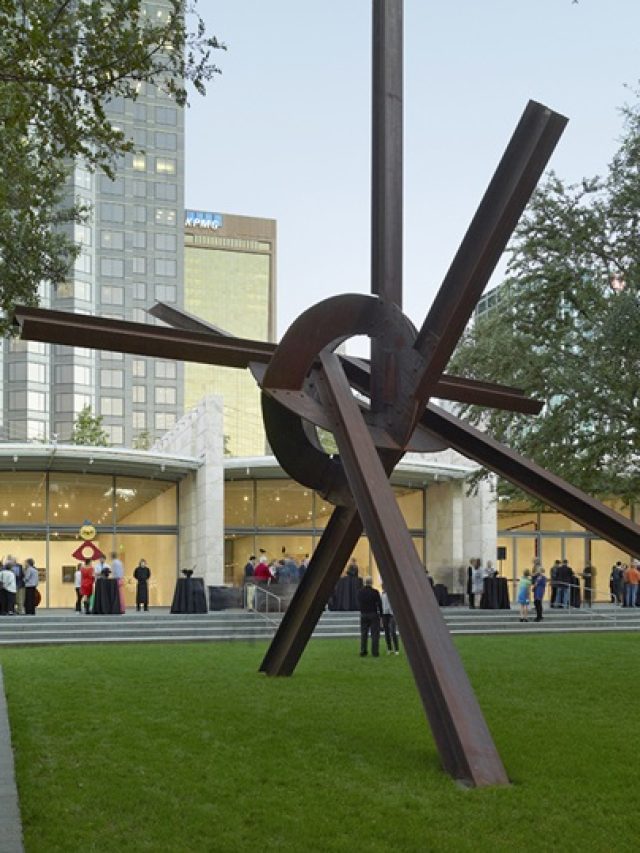Numerous museums and art galleries in Dallas, a city well-known for its thriving cultural landscape, feature collections that span ages and continents. Every institution provides a different window into the area’s rich artistic and historical fabric and beyond, from modern marvels to historic relics. Dallas offers an engaging experience for art enthusiasts and curious tourists, whether to the spectacular architecture of the Nasher Sculpture Centre, the immersive shows at the Dallas Museum of Art, or the hidden gems in lesser-known galleries. Come along on a tour of some of the most fascinating cultural establishments that help to define Dallas as a centre for creative expression and discovery.
The Dallas Museum of Art
Folded away in the bustling hub of downtown Dallas, the Dallas Museum of Art (DMA) is a shining example of artistic inquiry and cultural dissemination. This esteemed institution has enthralled guests with its varied collection, which spans more than 5,000 years of human ingenuity, since its inception in 1903. The DMA showcases the rich tapestry of worldwide artistic expression by taking visitors through time and continents, showing everything from ancient antiquities to modern masterpieces. Beyond its striking galleries, the museum is a vibrant centre for community involvement, education, and exhibitions that spark discussion and inspiration.
The DMA is home to an extensive collection of more than 24,000 artworks, from ancient relics to modern pieces, representing various countries and eras. This collection is a global cultural treasure trove that gives visitors a window into multiple artistic cultures. As a well-known educational institution, the DMA offers educational programmes, talks, workshops, and exhibitions that provide visitors of all ages with exciting experiences. These programmes encourage people to appreciate art, comprehend different cultures, and develop critical thinking abilities.
The museum fosters a sense of pride and cultural identity, which is vital to the Dallas community. Through outreach activities, partnerships with local schools, and free entry days, the DMA promotes accessibility and diversity and welcomes various audiences to engage with art and ideas. The DMA significantly enhances Dallas’s more extraordinary, excellent metropolitan area arts scene by working with other cultural institutions, putting on cutting-edge exhibitions, and supporting emerging artists. It is a hub for creativity and innovation, shaping the region’s cultural landscape.
African American Museum
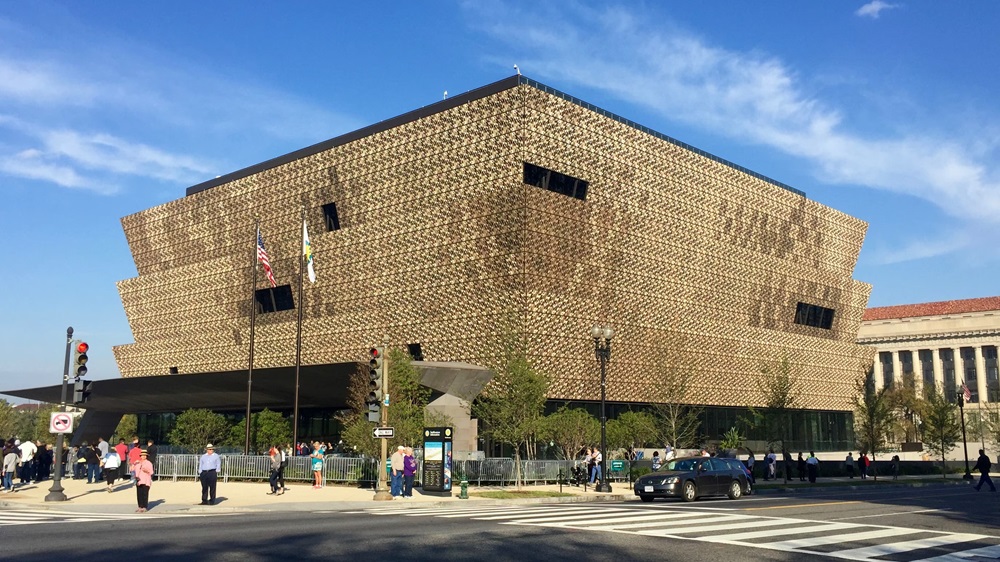
Dr. Harry Robinson, Jr. and other community leaders founded the African American Museum in Dallas in 1974. It was established in 1984 as a tiny art gallery within the Bishop College library before moving to its current Fair Park, Dallas site. The museum aims to conserve, present, and explain important works of African American visual art and cultural objects. The museum plays a crucial role in safeguarding and presenting the abundant cultural legacy of African Americans, encompassing art, history, and customs. It offers exhibitions and educational programmes that showcase the contributions made by African Americans to history, art, and culture. These initiatives seek to enlighten guests and foster respect and understanding.
The museum plays a crucial role in community outreach by hosting talks, workshops, and activities encouraging public conversation about African American history and current challenges. It showcases an eclectic assortment of mixed-media sculptures and paintings by African American artists. The range and inventiveness seen in the African American artistic community are reflected in this collection.
Perot Museum Of Nature And Science
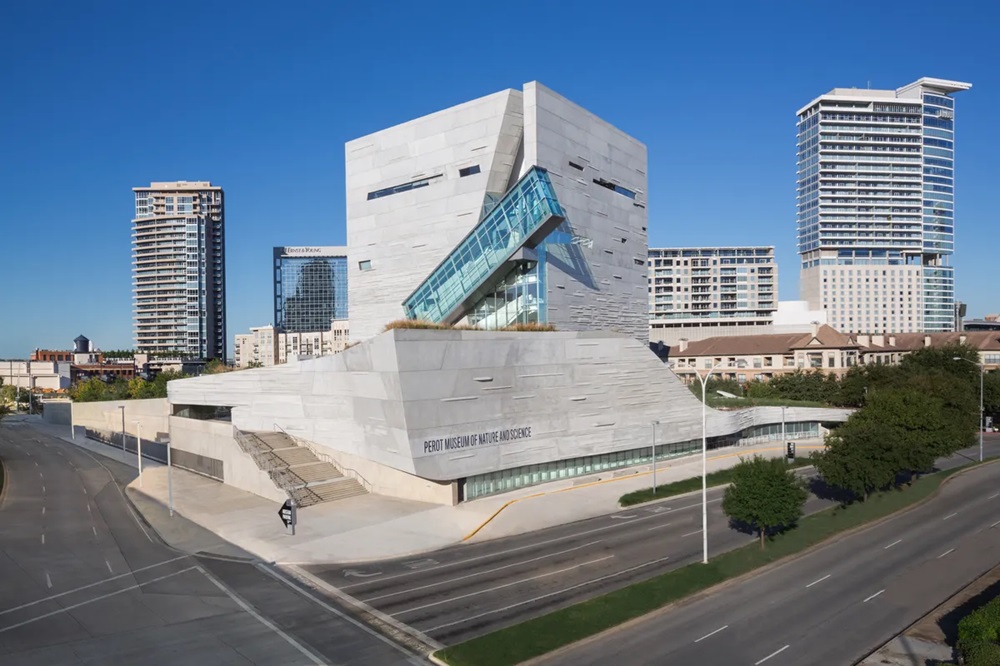
Known for its emphasis on natural history, science, and innovation, the Perot Museum of Nature and Science is a notable institution in Dallas, Texas. The museum bears the name of Ross Perot, a well-known Dallas businessman and philanthropist who substantially contributed to its founding. December 2012 marked the public opening of the establishment. The Perot Museum uses science and the natural world to encourage curiosity. It offers educational programmes and interactive exhibits that promote inquiry and comprehension of technology, space, earth sciences, and natural history.
The structure is a noteworthy landmark in Dallas architecture, designed by Thom Mayne of Morphosis Architects. The museum’s iconic cube-shaped building, with an escalator covered by glass, has come to represent the institution. The museum has both temporary and permanent exhibits spread across five floors. A Foucault pendulum, jewels and minerals, dinosaur skeletons, interactive weather and geology exhibits, and a kids’ museum section are a few of them.
Nasher Sculpture Center
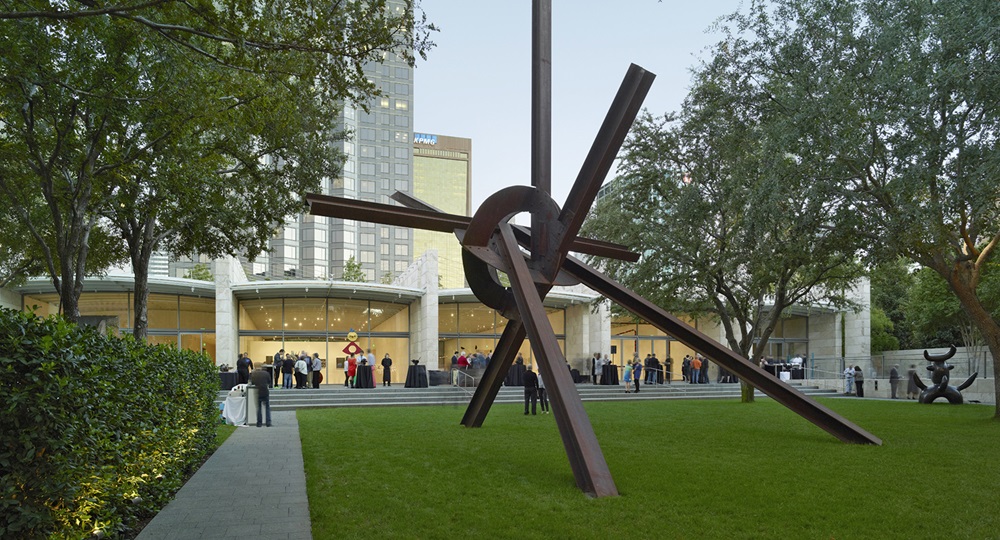
Dallas, Texas’s Nasher Sculpture Centre, is well known for its modern and contemporary sculpture collection. 2003 the Nasher Sculpture Centre opened to the public, founded by Raymond and Patsy Nasher. Over several decades, renowned real estate developer and art collector Raymond Nasher accumulated a sizable collection of modern and contemporary sculptures. One of the best collections of modern and contemporary sculptures is kept in the centre. It features pieces by well-known artists like Auguste Rodin, Henry Moore, Pablo Picasso, Alberto Giacometti, and many more. The exquisitely designed outside garden and inside spaces are venues for the sculpture exhibits.
Working with landscape architect Peter Walker, Renzo Piano created a masterwork for the centre’s structure. The layout strongly emphasises open space and natural light to go well with the sculptures, giving guests a calm and reflective area. Apart from its ever-expanding collection, the Nasher Sculpture Centre organises talks, special events, educational programmes, and temporary exhibitions that delve into sculpture’s relevance in modern art and culture.
Meadows Museum

Spanish art is a well-known Dallas, Texas-based Meadows Museum collection feature. Texas philanthropist and art collector Algur H. Meadows established the Meadows Museum in 1965. To provide the public access to his vast collection of Spanish art, he founded it as a Southern Methodist University (SMU) division. One of the most significant and extensive collections of Spanish art found outside Spain is housed in the museum. Its collection includes pieces by well-known artists, including Picasso, Goya, El Greco, and Velázquez, and dates from the Middle Ages to the present.
Sixth Floor Museum At Dealey Plaza
The Sixth Floor Museum at Dealey Plaza is on the sixth floor of the former Texas School Book Depository building in Dallas, Texas. The museum honours the memory of President John F. Kennedy and specifically focuses on the circumstances leading up to his murder in Dealey Plaza on November 22, 1963. Exhibits in the museum cover a wide range of topics, including JFK’s presidency, the assassination, its repercussions, and its cultural significance. Images, videos, relics, and Kennedy’s personal effects are on show.
Museum Of Biblical Art
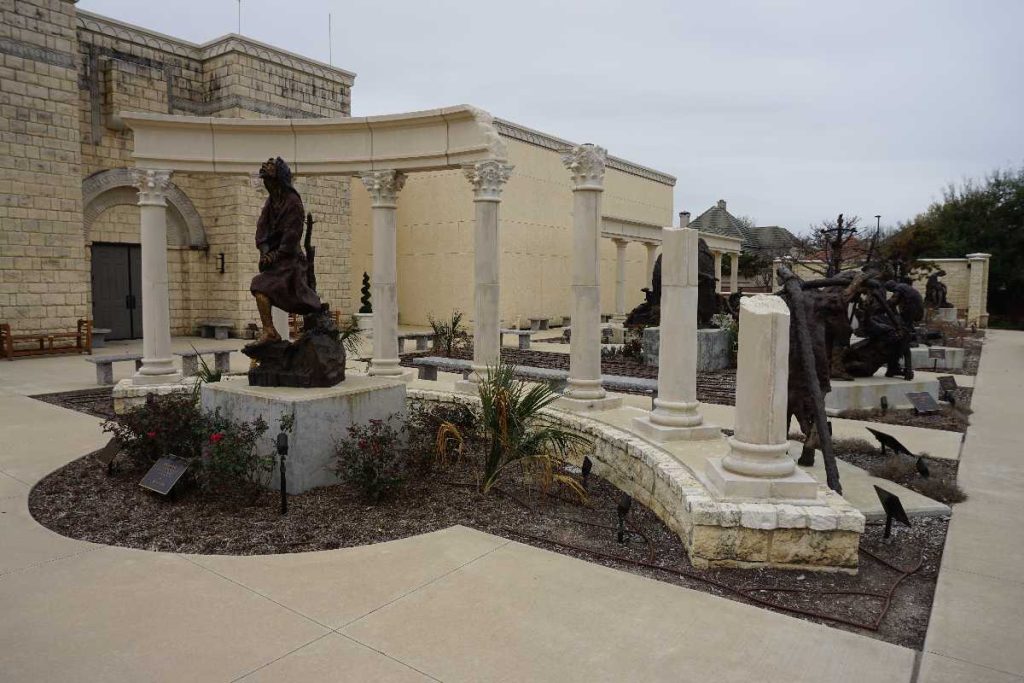
The goal of the 1967 founding of the Dallas, Texas-based Museum of Biblical Art (MBA) is to shed light on biblical themes and their impact on Western art and society. The museum presents these narratives through various artistic mediums, offering a distinctive concentration on art that highlights the biblical stories and lessons. An enormous artwork that shows Jesus Christ’s resurrection called “The Resurrection Mural” by artist Ron DiCianni is one of the most well-known pieces in the museum. A gallery devoted to Jewish art is part of the museum; its pieces examine Jewish history, customs, and biblical themes.
Crow Museum Of Asian Art
Asia’s arts and cultures are the focus of Dallas, Texas’s Crow Museum of Asian Art. Trammell and Margaret Crow, ardent collectors of Asian art, created the museum. Over the years, their interest in Asian art has grown, starting in the 1960s. More than 1,000 pieces from different Asian cultures and eras, including China, Japan, India, Korea, and Southeast Asia, are housed in the museum’s collection. The collection includes a variety of artistic mediums, including pottery, textiles, paintings, and sculptures. A range of temporary exhibitions showcasing many facets of Asian art and culture are held at the museum. The museum’s collection and artworks on loan from other organisations and private collections are frequently featured in these exhibitions.
The Dallas Contemporary Museum
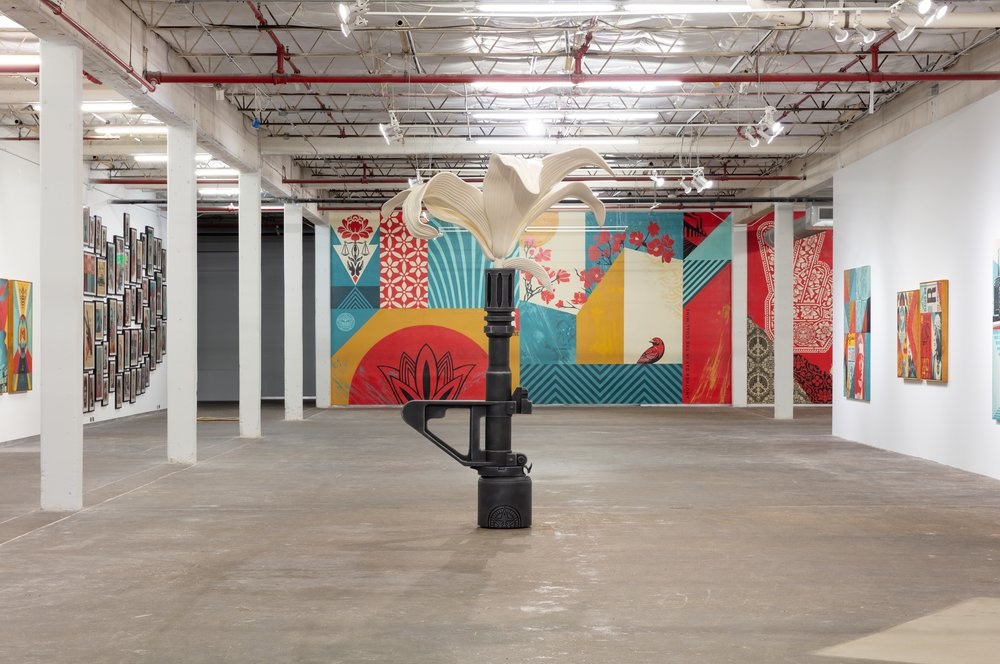
The Dallas Contemporary Museum is a non-collecting contemporary art museum in the Dallas, Texas, Design District. The museum was established in 1978 as the Dallas Contemporary Exhibitions to showcase innovative and thought-provoking work. Dallas Contemporary is a non-collecting organisation that prioritises temporary exhibitions. As a result, a wide variety of modern artwork by both domestic and foreign artists is made possible. The museum is renowned for its avant-garde and provocative shows, frequently including artists in their careers’ early stages. Notable artists, including Pia Camil, Julian Schnabel, and Shepard Fairey, have held shows there.
George W. Bush Presidential Library & Museum
The goal of the George W. Bush Presidential Library and Museum on the Southern Methodist University (SMU) campus in Dallas, Texas, is to preserve and share the history of the 43rd President of the United States, George W. Bush’s presidency. More than 70 million textual pages, 43,000 artefacts, 200 million emails, and 4 million digital photos are among the vast archives kept by the library. These records of the presidency are essential for historical study and public comprehension of the time.
The Ann & Gabriel Barbier-Mueller Museum
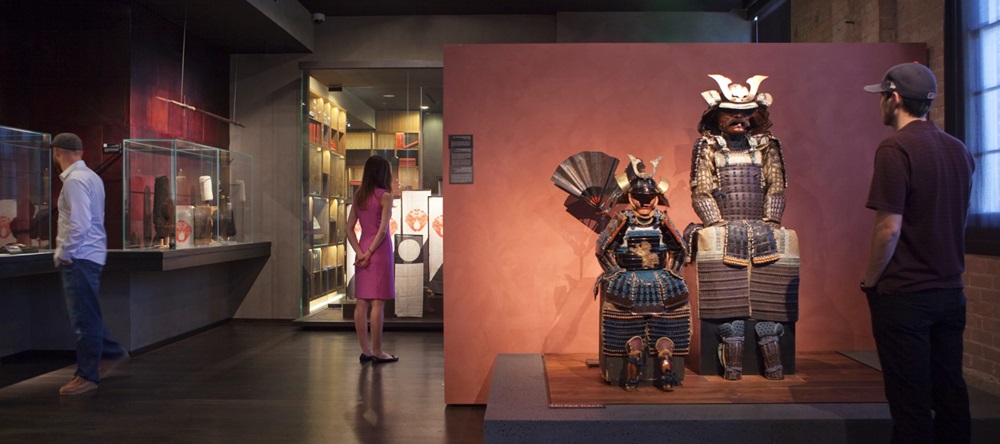
Situated in Dallas, Texas, the Ann & Gabriel Barbier-Mueller Museum is well known for its vast and distinctive collection of samurai artwork and antiquities. One of the largest collections of samurai armour, weapons, and associated items outside of Japan is kept at the museum. This comprises ornate armour sets, kabuto helmets, mengu masks, and guns like katana swords and yari spears. Through its exhibits, the museum offers insights into the life and times of the samurai, a warrior class vital to Japanese history from the 12th to the 19th century. It examines the samurai’s dual roles as fighters and benefactors of culture and the arts.
Dallas Holocaust & Human Rights Museum
To fight prejudice, intolerance, and apathy, the Dallas Holocaust and Human Rights Museum, which is situated in Dallas, Texas, is committed to teaching the public about the Holocaust and furthering human rights. The museum provides a thorough examination of the Holocaust through the use of objects, survivor testimony, and in-depth historical narratives. Its goal is to give guests a comprehensive grasp of the Holocaust’s events and ramifications. Solitary and permanent exhibitions aim to captivate viewers of all ages and backgrounds. The messages of these displays are communicated through personal narratives, objects, and multimedia presentations.


